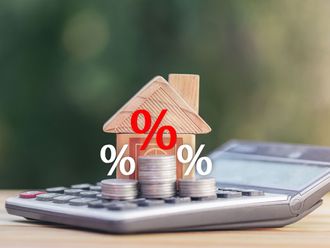‘Affordable’ is the buzzword in Dubai’s real estate industry these days. The question is what does it mean?
Affordable is one of the first words that springs to mind when people are considering buying or renting a property to live in. It is ultimately the very concept that people consider whether they can ‘afford’ to live somewhere or not. Although a generic term, the actual monetary figures involved are different for everyone.
The saying one man’s feast is another man’s famine is most apt to explain the concept of affordability. Almost without exception every person or family’s income and outgoings are different. Thus, what each will deem ‘affordable’ is different, too.
But what is affordable? How is a buy classed in that category? The main criterion quoted in the press is that it has to be affordable to families earning Dh15,000 a month. For many, this amount is a long way off, and thus these properties are not affordable to them.
But we digress. Keeping Dh15,000 as the necessary income for affordability, where does that leave a household? Once we have considered travel, food, schooling, clothing, health care (as yet not everyone is covered) and, of course, the current rent, what is that going to leave to either save up to put a deposit down, or alternatively pay off a mortgage.
At this point it is worth remembering that deposits are often 10-25 per cent of the final sale price with further instalments required throughout the building process. Giving someone two to three years to pay the instalments with a final balloon payment on handover is not going to make it any more affordable.
Stretching the payments out to five years probably won’t either. After all, while a property is being built, the eventual buyer has to pay to live somewhere else.
At present, every project launch seems to fit into two categories: luxury or affordable. There are a number of reasons for this, the first, which is most obvious, is related to advertising and generation of interest.
If a development is classed as luxury, it is often touted as being bigger and built to better standards, with more expensive fittings than the rest. For this grandeur, a premium will be charged, and naturally columns will be written about it.
It is no different when it comes to affordable developments. Each seems to try and be slightly cheaper than the last on a per square foot basis, while offering all of the conveniences and travel links. Again, this grabs column inches, but to us it all seems a little different.
Often, the tag affordable seems to have been added on to a development’s press release for the sake of publicity. This guarantees interest, but what is rarely announced is what part of the development is actually going to be affordable.
Will it be every property or just a small fraction of it? We have seen examples of late of people queuing up for a first phase release and less than 20 units being in the so-called affordable category. We have also seen entire developments marked as affordable suddenly, so as the per square foot prices creep up with anticipated demand.
From this it is clear that the word affordable is being bandied about to help garner more interest for projects.
We, like everyone else, understand that for a business to work it has to make a profit, and property development is no different. What would be nice is a little more clarity on exactly what is being built and then released (this includes prices and the different specifications). We are sure it would still gain the column inches required; in fact, full disclosure would probably gain more on the basis of transparency.
Ultimately, the one area we have not touched upon is whether the properties in the affordable category are actually going to those that they are aimed at. Or, are they being bought up as investments and either flipped or rented to their intended buyers?
In all this, if it is the latter, then those tenants will be at the mercy of changes in the RERA (Real Estate Regulatory Agency) Rent Index, and the first year’s affordable rent may just see itself slowly creep up to fall in line with the rest of the properties in the area. Thus, leaving the very people the affordable property was meant to help in exactly the same situation as they were in before.
— The writer is the managing director ofpropertyrights.ae, which tries to help tenants and landlords understand their rental rights.












